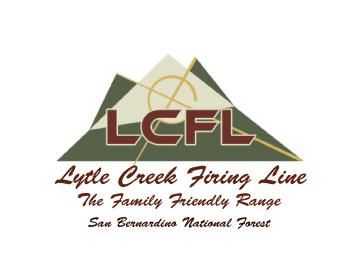Do You Know the History of MCAS El Toro and Toxic Chemicals?
- Home
- Journal
- Contaminated West Coast Marine Bases
- Do You Know the History of MCAS El Toro and Toxic Chemicals?
Spanning about 4,700 acres, the Marine Corps Air Station El Toro came into operation in 1943 near Irvine, California, becoming home to Marine Corps Aviation – West Coast. The base soon became the largest jet fighter facility on the West Coast, supporting the Fleet Marine Forces in the Pacific Ocean.
The runways at the base were large enough to cater to the largest aircraft in the US arsenal. El Toro also became a base for the military to send and receive their forces during the Vietnam War. Unfortunately, the site had to close down in 1999.
Let’s go over why the site closed down and the legacy it left behind.
Leaving a Toxic Exposure Legacy Behind
After the Marine Corps Air Station El Toro closed down, preliminary investigations revealed a seriously high PFAS concentration at the base, about 3,826 parts per trillion, significantly exceeding the 70 parts per trillion safe limit set by the Environmental Protection Agency (EPA).
The EPA further identified 25 potentially contaminated areas at the base, including the landfills and other battery acid and hazardous substance dumping grounds. During a remedial investigation, El Toro had volatile organic compounds (VOCs) and trichloroethylene in the groundwater, which traveled about 3 miles from the base.
The two large aircraft hangars were the primary sources of groundwater contamination. Military officers would wash down the airplanes with TCE, a commonly used degreaser. The chemicals would then seep into the soil, contaminating the groundwater below. The two hangars and the surrounding ground became the main threats, containing VOCs and TCE.
The four inactive landfills contained perchlorate plumes that remained stable. However, studies on the groundwater revealed that one of them had low levels of VOCs and other metals. The main concern is the hazardous contaminants in the surface water flowing into the Upper Newport Bay Ecological Reserve.
A long-term remedial plan is underway to clean up the VOCs in the tanks, treatment lines, and the 25 potential contaminated sites identified by the US Navy at El Toro. The base used many dangerous chemicals during its operations, but the burn pits that the US Navy would use to burn chemicals and other hazardous substances also released toxins.
Contaminants Found at Marine Corps Air Station El Toro
The following are some known toxins at the Marine Corps Air Station El Toro:
- Battery acids
- Leaded fuels
- Polychlorinated biphenyls (PCBs)
- Trichloroethylene (TCE)
- VOCs
Health Effects of Toxins Found in Contaminated Soil and Water at El Toro
The two main toxins existing at El Toro are TCE and PCBs.
According to studies conducted by the EPA, PCBs are strong human carcinogens that cause multiple types of cancer, including lung and breast cancer. Exposure to PCB also causes immune system deficiencies, congenital disabilities, deficits in neurological development, learning deficits, changes in thyroid hormone levels, liver problems, and many other health issues.
TCE also has similar adverse health effects, affecting the central nervous system and the reproductive system. It also causes developmental effects, neurological effects, cancer, and non-cancer chronic effects.
Environmental Protection Agency Lists El Toro as a Superfund Site
Due to severe contamination levels in soil and groundwater, the EPA placed El Toro on the superfund program’s national priority list in 1990. To manage the site better for cleanup, the EPA established three special operable units (OU) for El Toro.
Ongoing Cleanup
OU-1 Groundwater Sites 18 & 24
In 1997, the Environmental Protection Agency completed an investigation into the nature and severity of the contaminated groundwater. To address the contamination at El Toro, the US Navy joined hands with the Orange County Water District and Irvine Ranch Water District on a VOC treatment system.
The relevant organizations, including the US Navy and the Department of Justice, signed agreements for joint projects in July 2001. In November 2001, relevant authorities put forward a remedy plan at a public meeting, and by July 2002, the Navy handed in its remedial design and plan. They completed the remedial design by 2005, and in mid-2006, the US Navy completed remedial action construction.
In the fall of 2006, the groundwater extraction and treatment system became operational, and in 2007, a ceremony for groundwater restoration took place. Groundwater remediation efforts are still going on.
OU-3 Site 16
Site 16, located within the runways of the El Toro base, was a site for fire fighting training, and because of the nature of the site, the military would set gallons of solvents on fire in large burn pits which they then doused with chemicals. The ground at the site showed severe VOCs and petroleum hydrocarbons contamination.
In 1999 and 2001, the US military conducted a multi-phase extraction study to assist in the removal of VOCs. However, it did not improve the contamination levels found in the groundwater.
In September 2002, the Navy recommended Monitored Natural Attenuation (MNA) for cleaning the groundwater and ensuring continuous soil monitoring. In January 2006, the final remedial design documents got the go-ahead, and in spring 2007, the EPA approved the Operating Properly and Successfully Evaluation for the remedy.
OU3-A Sites 8, 11, & 12
The US Navy put forward the final feasibility study draft for sites 8 (former storage yard), 11 (transformer storage area), and 12 (former sludge drying bed) for agency review in 1998. The sites here did not contaminate the groundwater but were contaminated primarily with large quantities of PCBs in the soil.
The Navy signed the Record of Decision (ROD) in 1999 for soil removal and, in 2003, an Explanation of Significant Differences. In 2005, the Navy removed the contaminated soil from Site 11; in February 2006, the EPA approved the site for closure.
For sites 8 and 12, the Navy and EPA signed a re-issued ROD (May 2006) in spring 2007. By December 2008, the EPA had completed a remedial design, and starting in winter 2009, the Navy began work on corrective actions for these sites.
Abandoned Wastewater Treatment Lines
To understand the damage done by the abandoned wastewater treatment lines and tanks, the Marine Corps Air Station El Toro conducted environmental studies that they completed in mid-1996. Several underground storage tanks are undergoing closure, and under the recommendations of the state, the US Navy constructed product removal systems.
Site Studies
OU-2 Site 2 Groundwater
Site 2 is a former landfill, and investigations into Site 2 revealed a perchlorate plume originating from Site 1 at the disposal areas.
Currently, the US Navy is conducting pilot studies to identify new remedial technologies to combat contaminated groundwater. They finalized the feasibility studies for Sites 1 and 2, and by February 2012, they signed the ROD.
OU-2C Anomaly Area 3
The US Navy completed and submitted remedial investigations and feasibility studies for anomaly area 3 in December 2005. The area had borrow pits filled with toxic waste and construction debris. In 2009, the Navy completed the feasibility studies for Area 3.
OU-3 Site 1
In 2005, the Navy conducted a remedial investigation at Site 1, an Explosive Ordinance Disposal Range. The military used the site for explosives such as hand grenades, land mines, and rockets, among other explosives. A remedial investigation report revealed a perchlorate plume in the groundwater that traveled to Site 2. By 2012, the Navy had completed contaminated soil feasibility studies. Pilot studies are currently underway, and a feasibility study for groundwater will commence once completed.
Remedy Design
OU-2B and OU-2C Landfills
In 1998, a proposal to cap the four landfills at OU-2B and OU-2C went to public comment. In addition, landfills at OU-2B will undergo habitat restoration for the endangered California Gnatcatcher.
In April 2000, the Navy signed a ROD for OU-2B and completed the remedial design by the fall of 2005. OU-2B has two landfills, Sites 2 and 17. The Navy completed the capping and habitat restoration at Site 2, while the work is nearing completion at Site 17.
In August 2002, the Navy completed the pre-investigation plan for landfill OU-2C, consisting of Sites 3 and 5, and field work began soon after. By 2009, the Navy had completed the design efforts and remedial actions for sites 3 and 5.
Cleanup Complete
OU-1 Site 24 Soil
The Navy signed a ROD for site 24 due to the contamination of soil around the two aircraft hangars. The soil contamination also affected the groundwater under the base. In May 1999, the Navy used the Soil Vapor Extraction (SVE) systems from Norton Air Force Base until September 2000. Studies at the time confirmed that the Navy achieved the soil gas cleanup goals.
The site closure plan soon received approval from the regulators. However, groundwater monitoring wells will still be in place until the groundwater cleanup system removes the last remaining contamination in the water.
OU-3B Sites 7 and 14
In September 1999, regulatory agencies received a remedial investigation report for Sites 7 (drop tank storage area) and 14 (battery acid disposal area). They signed a ROD for No Further Action in September 2001 for both the sites.
Aftermath of Toxin Exposure
Although El Toro is permanently closed, the officers and their family members stationed at El Toro are suffering illnesses as a result of harmful substance exposure. Many El Toro veterans are dying each day from cancer, respiratory problems, and other diseases arising from exposure to TCE and PCB.
Create Awareness with the Paul Ehline Memorial Ride
The Paul Ehline Memorial Ride helps create awareness about service-related cancer and other illnesses our West Coast veterans have contracted from exposure to deadly toxins. Join our motorcycle ride across America to support our struggle for justice and to ensure a better life for our veterans and their family members after their service.
Many veterans are reporting claim rejections by the VA for their service-related illnesses. If you are suffering from the aftermath of toxic exposure during your service at El Toro or any other military base, contact us at (310) 622-8719 for free formal legal advice on your toxic exposure claim.
Resources
General Stuff
Address
Paul Ehline Ehline Memorial Ride
3838 W Carson St.
Torrance, CA 90503
Phone : (310) 622-8719
© paulehlineride.org. All rights reserved.
Donations submitted through donation forms on PaulEhlineRide.Org are tax-deductible to the fullest extent allowed by U.S. and state laws. These will be in U.S. Federal Reserve Notes. Paul Ehline Memorial Ride™ is a U.S. nonprofit, tax-exempt charitable Section 501(c)(19) organization that benefits US Armed Forces veterans under the U.S. Internal Revenue Code. (Tax identification number 85-4040563.)





